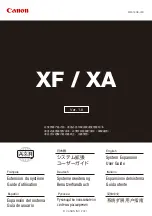
28
•
The top of the antenna should fall within the 45-degrees safety angle towards the
lightning rod.
•
There should be no metal objects within 3.3 feet (1 meter) of the omni antenna. Use an
independent lightning rod that is high enough to keep all antennas under its protection
cover.
•
Ensure the antenna is high enough to meet the coverage requirements specified in the
operator’s network design plan.
If it is not possible to install an independent lightning rod due to environmental limitations,
ensure that the pole supporting the lightning rod is at least 3.3 feet (1 meter) away from the
omni antenna. Follow standard transport procedures to hoist the antenna to the target
location.
Once the antenna and eNB unit are installed securely in the proper position, verify grounding
and lightning protection. Apply or verify reliable weatherproofing as explained in section 2.6
of this document.
3.8.3.3
Install Directional Antenna on Tower
Following are guidelines for installing a directional antenna at the cell site.
•
First, assemble the antenna and the upper and lower racks, as shown in Figure 3-26.
•
Follow standard transport procedures to hoist the antenna to the target location.
•
Using expansion screws, fix the support pole vertically to the ground (or concrete
pillars on a rooftop), and fasten it with steel wires.
•
Mount the antenna assembly onto the pole using the installation racks.
Figure 3-26: Assemble Directional Antenna
Once the antenna and eNB unit are installed securely in the proper position, verify
grounding and lightning protection. Apply or verify reliable weatherproofing as explained in
section 2.6 of this document.







































